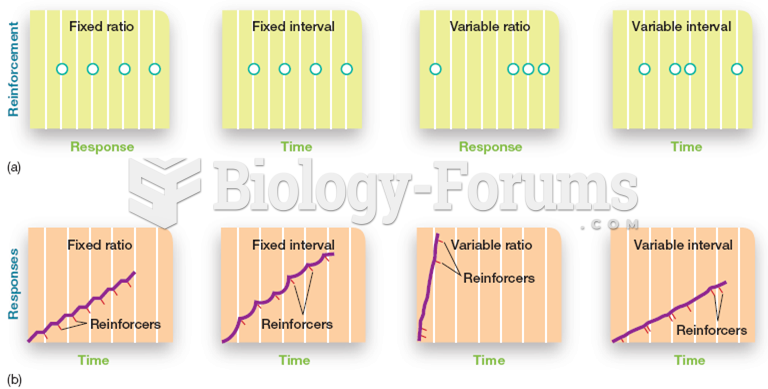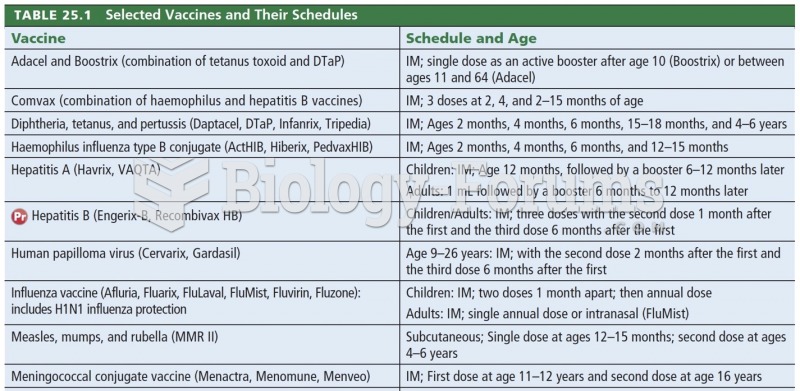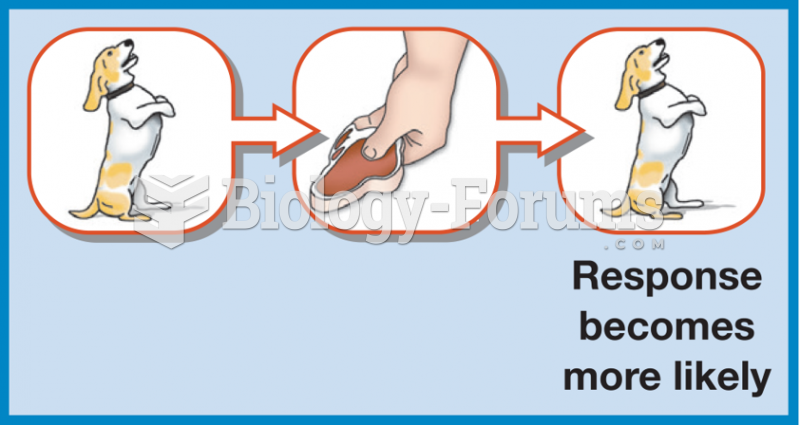Answer to Question 1ANS: Students' answers will vary.
Skinner pointed out that in everyday life outside the psychology laboratory, our behavior is rarely reinforced every time it occurs. In a Skinner box, after observing that the rats continued to press the bar at a fairly constant rate even when they were not being reinforced for each response, Skinner decided to investigate different reinforcement schedules to determine their effectiveness in controlling behavior. Among the rates of reinforcement he tested are the following.
- Fixed interval
- Fixed ratio
- Variable interval
- Variable ratio
Fixed interval: A fixed-interval schedule of reinforcement means that the reinforcer is presented following the first response that occurs after a fixed time interval has elapsed. That interval might be 1 minute, 3 minutes, or any other fixed period of time. The timing of the reinforcement has nothing to do with the number of responses. A job in which your salary is paid once a week or once a month operates on the fixed-interval schedule.
Fixed ratio: In the fixed-ratio schedule of reinforcement, reinforcers are given only after a specified number of responses have been made. For example, the experimenter could reinforce after every 10th or 20th response. In this schedule, unlike the fixed-interval schedule, the presentation of reinforcers depends on how often the subject responds. The higher response rate for the fixed-ratio reinforcement schedule also applies to humans. In a job in which your pay is determined on a piece-rate basis, how much you earn depends on how much you produce.
Variable interval: In the variable-interval schedule of reinforcement, the reinforcer might appear after 2 hours the first time, after 1 hour 30 minutes the next time, and after 2 hours and 15 minutes the third time. A person who spends the day fishing might be rewarded, if at all, on a variable-interval basis.
Variable ratio: A variable-ratio schedule of reinforcement is based on an average number of responses between reinforcers, but there is great variability around that average. Skinner found that the variable-ratio schedule is effective in bringing about high and stable response rates, as the people who operate gambling casinos can happily attest. Slot machines, roulette wheels, horse races, and state lottery games pay on a variable-ratio reinforcement schedule, an extremely effective means of controlling behavior.
Answer to Question 2ANS: Operant conditioning is the procedure by which a change in the consequences of a response will affect the rate at which the response occurs.
The operant conditioning process can be illustrated by following the progress of a rat in Skinner's operant-conditioning apparatus, also known as the Skinner box. When a food-deprived rat is placed in the box, its behavior at first is spontaneous and random. The rat is active, sniffing, poking, and exploring its environment. These behaviors are emitted, not elicited; in other words, the rat is not responding to any specific stimulus in its environment.
At some time during this random activity, the rat will depress a lever or bar located on one wall of the Skinner box, causing a food pellet to drop into a trough. The rat's behavior (pressing the lever) has operated on the environment and, as a result, has changed it. The environment now includes a food pellet. The food is a reinforcer for the behavior of depressing the bar.
The rat now begins to press the bar more often. It gets more foodmore reinforcementand so presses the bar even more frequently. The rat's behavior is now under the control of the reinforcers. Its actions in the box are less random and spontaneous because it is spending most of its time pressing the bar, and eating.
If we put the rat back in the box the next day, we can predict its behavior and we can control its bar-pressing actions by presenting or withholding the reinforcers or by presenting them at a different rate. Withholding the food extinguishes operant behavior in the same way that it extinguishes respondent behavior. If the unreinforced behavior no longer works, in that it no longer brings a reward, after a while it will stop. Thus, the person who controls the reinforcers controls the subjects' behavior.







